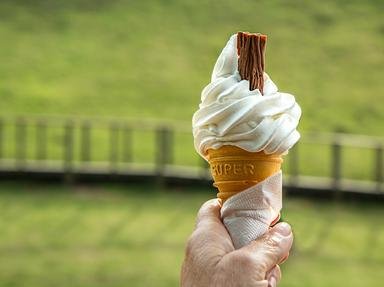Quiz Answer Key and Fun Facts
1. Generally speaking, it was found, over time, that ice-cream had to be stirred slowly several times as it was freezing. Why was this done?
2. Onto more specific history now, in which ancient empire, with rulers such as Cyrus the Great, was a form of ice cream first manufactured?
3. Other early civilisations also adopted the snow and fruit juice combination for ice cream. Which early people, who were widespread over the Middle East and northern Africa, first began using sugar and milk instead to make this product?
4. Over in the far east, China was eating a form of rice ice cream by 200 BC. How did they freeze the containers holding their mixtures?
5. One of the many deeds and achievements credited to this famous explorer is that he took the Chinese technique of making ice cream back with him to Europe. Who was he?
6. This is really impressive. Because they also loved the taste of early ice cream, the Mughal emperors of India had ice imported from Hindu Kush for the freezing process. How did they get the ice to its destination before it melted?
7. The manufacture of ice cream spread northwards to France from Italy with the marriage of the Italian Catherine de Medici to Henry II of France in the early 16th century. Sensibly, how did she import ice cream to France?
8. Within another hundred years, the manufacture of ice-cream had finally found its way over to England. Which English king, with an unstable head, was said to be so impressed with this treat that he tried to keep its formula a secret?
9. The nefarious scheme of trying to keep the formula for making ice-cream a secret in England most obviously didn't work. Instead, such was its subsequent popularity that it even appeared as an official entry in which famous English dictionary?
10. And so to the United States. Ice cream and its manufacture was introduced to that country with the immigration of which religious group of people?
Source: Author
Creedy
This quiz was reviewed by FunTrivia editor
WesleyCrusher before going online.
Any errors found in FunTrivia content are routinely corrected through our feedback system.

